My rocky relationship with warehouse storage
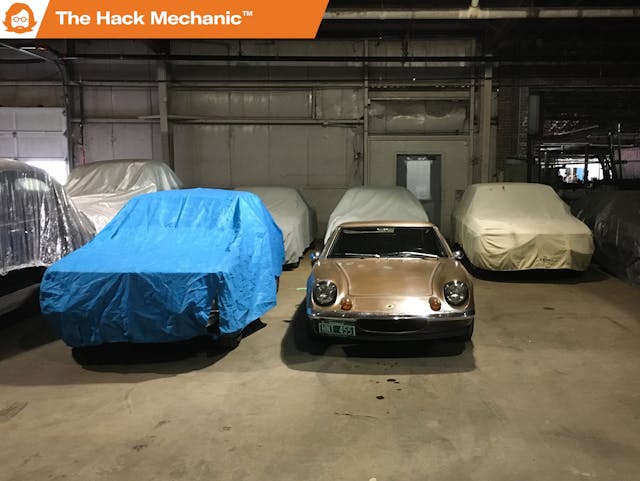
Last year, I wrote about losing the storage spaces that I’d had for nearly a decade. These five small individual one-car bays, each with its own roll-up door, were located in Fitchburg, Massachusetts. I found them when I outgrew my three-car garage in Newton and needed more space, and I was put off by the $300-ish per month I’d need to pay in suburban Boston for restricted-access space. I found that the farther west of Boston I looked, the farther rent dropped off. Fitchburg is about 50 minutes from my house, but it’s a nice drive out Rt. 2, and for $50/month, the garage there was a great trade-off on the cost-distance-access curve. Initially only one bay in the five-car garage was available, but by the end of my tenancy, I was renting all five. The rent for each bay later went up to $75/month, but still, $375/month for five individual bays with 24-hour access was dirt cheap. “The Fitchburg Swap”—taking two hours to drive one cool old car out on a Sunday morning and grab a different one—became a cherished part of my weekend routine.
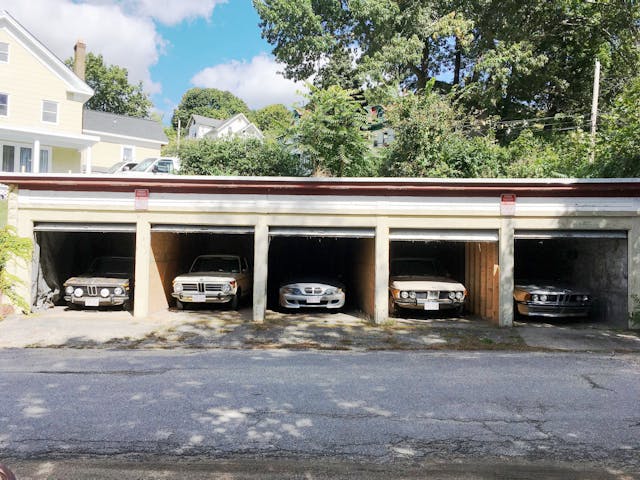
And then it ended. The house hosting the garages was sold, and it was only a matter of time before the new owners wanted the spaces for their tenants. I scrambled and found space in a cavernous warehouse in Monson, Massachusetts, on the Massachusetts-Connecticut border. On paper, it was—like the Fitchburg space—a slam-dunk; the cost was just $70 per car per month, the warehouse was 70 miles from my house in Newton, and most of that was a straight shot out the Mass Pike (I-90), so with zero traffic, Google Maps estimated the drive at only 15 minutes beyond the Fitchburg spaces. The downside was that it’s not only shared warehouse space but space that’s rented primarily to RVs, trailers, and boats, so when the cars are blocked in for the winter, you’d need a really good reason to have to get one of them out.

It’s been about 15 months, so I now have enough experience to offer up the following assessment.
Ready?
It’s like a marriage you stay in for the kids.
Don’t get me wrong. Cost-wise, at $350/month for five cars, I’ve yet to find anything that approaches it. It’s expandable—if I buy another car and need somewhere to stash it, I can pony up another $70/month: boom, problem solved. And the guy who owns the warehouse is great. The building does triple duty for his irrigation business, his own cars (he’s into oddball French stuff—that’s redundant, right?) and commercial storage, and he’s been very flexible when I’ve needed to get a car out at times other than normal business hours.
But the sum-total of the 15-month experience is that it’s decidedly less convenient for me than the old spaces in Fitchburg were. If I had a better option, I’d be practicing my “it’s not you, it’s me” lines. But I don’t. So I stay. For “the kids.” Romantic, huh?
The first issue is the distance. Google Maps may say that it’s only 1:05 from my house with no traffic, but I’ve yet to clock it at under 1:15, and with the usual non-rush-hour traffic, it’s more like an hour and a half. At rush hour, it can be over two hours. And on certain peak weekends, like when the kids are coming back to school at UMass Amherst or during prime leaf-peeping in the fall, it can make you cry. And even though I thought the straight shot out the Pike would offset the longer distance, in fact it’s been the opposite—the highway drive is boring. The narrower, curvier, more-punctuated drive out Rt. 2 was much more enjoyable.
The second and much larger issue is the restricted access. Again, I’m glad to have found anything, but it’s been tough to go from the don’t-need-to-call-show-up-anytime-you-want freedom of the old Fitchburg individual garage bay spaces to a locked warehouse that’s surrounded by a locked fence, and inside your car may be blocked in. The blockage may be my own cars, someone else’s, or multiple boats and trailers. I avoid the latter by not even attempting to pull cars out until the owner tells me that most of the big stuff has left. The blocking-in by other cars is usually handled fairly efficiently by the owner’s employees by either putting the offending car in neutral and rolling it, or putting it on GoJak wheel dollies. The whole process is less formal than scheduling an actual appointment to come to the warehouse and pull out a car—whenever I contact the owner and ask him, the answer is usually “sure, someone is almost always here during the week.” That’s usually true and it usually goes quickly enough, unless everyone is in some far-flung corner of the warehouse and difficult to find. And weekends can be tough.
I hate to keep playing the old-guy-with-bad-back card, but that’s the third issue. When I’ve had an urgent need for access on a weekend when no one’s around, the owner has been kind enough to tell me how to get into the building, but the gate is one of those 20-foot-long sliders, and it’s not motorized—you need to manually slide it on its less-than-perfect rollers. Between this, the non-motorized roll-up door, and rolling around my own cars so I don’t foul up the air inside, a swap leaves me with back pain longing for the old individual bay doors of Fitchburg. And, of course, if I go through all that to find that the car I want to drive is blocked in, I’m out of luck.

Now, I’ll freely admit that I look at the years the cars spent in Fitchburg through rose-colored glasses. Yes, the 24-hour access and individual bays with roll-up doors were great, but the low price reflected ceilings that leaked until the roof was fixed, and the garages were in a part of town that wasn’t great. (I joked with my wife about the lovely proposition I once received from a lovely redheaded young woman. I thought it was a lot funnier than she did). As much as I tried to do “The Fitchburg Swap” without attracting attention, there’s nothing subtle about vintage BMWs and a ’74 Lotus Europa Twin Cam Special, and when folks walking by ask you about the cars, you can either act like an aloof rich guy (I’m neither) or you can take the time to answer questions and make friends. It all worked out, and nothing ever happened to me or the cars, but I was keenly aware of the less-than-secure situation, and it had been years since I’d stored my BMW 3.0CSi out there.
Still, The Fitchburg Swap could be done in two hours. In contrast, The Monson Swap, best case, is more like four. Again, it doesn’t sound like much, but there’s a significant difference between something that can be knocked off between breakfast and lunch and something that takes half a day.
For all these reasons, I hadn’t been out to the Monson warehouse since Thanksgiving. That’s six months. My previous visit was in September, when I needed to grab my Bavaria and drive it out to upstate New York to be used in a movie. The three other cars in the warehouse—two 2002s and a 635CSi—hadn’t even been started and driven since I moved them there from Fitchburg a year ago.
I was beginning to feel like a negligent hoarder.
Even worse—I, the guy who owns 13 vehicles but keeps insisting he’s “not a collector,” felt like I was having what I could only describe as a crisis of automotive faith. I mean, if I wasn’t driving these cars, why do I even own them? Hell, forget driving—I wasn’t even visiting them.

So, last week, out I drove to Monson in “Hampton,” my 49,000-mile ’73 2002. The plan was to check on the cars, drive them, get any inspected that needed it, empty the water from the DampRid containers, and do a “Monson Swap,” driving a different car home. I brought my usual road tool box, a cigarette-lighter tire inflator, starting fluid, fresh DampRid, fresh Bounce dryer sheets to keep the rodents at bay, a portable battery jump pack, and jumper cables just in case the jump pack wasn’t enough. Note that there isn’t access to electricity in the warehouse to run trickle chargers, and my days of pulling batteries out and bringing them home are behind me, so I simply unhook the batteries and hope for the best. I’ve never had problems doing this for a four- or five-month winter sit; I reconnect the negative terminal and the cars usually crank over fine. A year, though, is pushing it, and some of the cars did need the help from the jump pack.
One of the owner’s employees directed me to my cars (they’d been moved within the warehouse to make room for some building repairs). Initially I waived him off, but the warehouse is huge and a bit warren-like, and it would’ve taken me a while to find them if I just wandered around. Plus, even my beloved boxy little BMW 2002s aren’t as recognizable under covers as one might think.

The first thing I did was lift the covers off all five cars and take inventory of the inspection stickers. I knew that those on the cars that had been sitting for over a year were expired. I didn’t expect the total to go four out of the five. My new status as negligent hoarder was now officially conferred.
Fortunately, there’s an inspection station less than a quarter mile from the warehouse. Car by car, I checked the fluids, verified that there weren’t mice nesting in the air cleaners, reattached the front license plates, woke the cars from their slumber, looked underneath for puddles, eased the cars out of the warehouse, stopped at the end of the street, checked for leaks and puddles again, then got the cars inspected. I did the Bavaria first, then “Bertha,” the patina-laden 2002.

Only “Louie,” the ’72 2002tii, did something surprising. As I was driving it out of the warehouse, I noticed that the brake warning light was on. This is usually due to the handbrake not being fully released. I stopped and jiggled the handbrake lever, even pulled up the rubber boot to manually pull the spring back on the switch, but couldn’t make the light go out. I opened up the hood, thinking that maybe the float in the brake reservoir was erroneously reporting a low fluid level. I was stunned to find that the fluid was not only low, it was below the level of the pipe to the clutch master cylinder.
I walked back and looked at the spot where the car had been parked, but I didn’t see any puddles. Was it possible that I’d driven the car there a year ago with it that low on brake fluid? Or had the fluid leaked out and I couldn’t tell because all my cars had been relocated within the warehouse so the puddles were now somewhere else? I didn’t know. I hadn’t brought any brake fluid, so I drove the car back into the warehouse, grabbed another car, drove to the nearest auto parts store, topped off Louie, tested the brakes and clutch, didn’t see anything obviously leaking, drove the quarter mile to the inspection station, and left the mystery for another day.
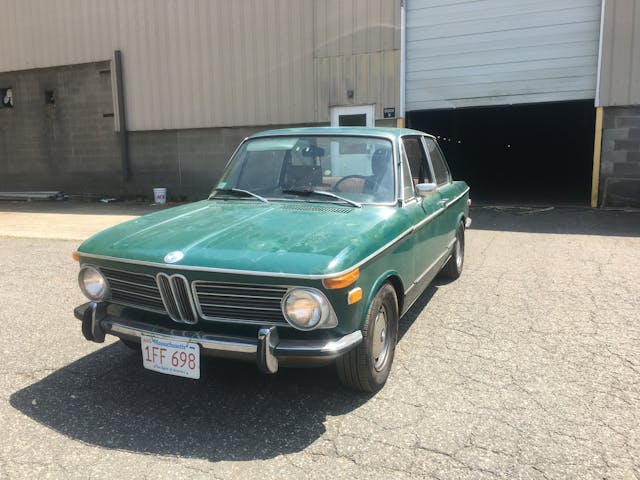
By the end of the day, I’d gotten three of the four cars inspected. I couldn’t do the ’79 Euro 635CSi because I’d left its renewed registration at home. I stashed Hampton in the warehouse and drove home in my ’99 BMW M Coupe (a.k.a. “the clown shoe”).
The next day, I did a second Monson Swap, this time driving out in the Lotus Europa with its newly-improved brakes, and bringing the up-to-date registration for the 635CSi. I got the 635 inspected, and drove it home for some R&R on its air-conditioning system (the last road trip I took it on in 2021, a fitting had loosened up on the compressor and it lost its refrigerant). If, on the drive out the Pike, the tiny feather-light Lotus felt like a 14-year-old girl lost in the big city, the 635CSi was in its Autobahn-inhaling element.
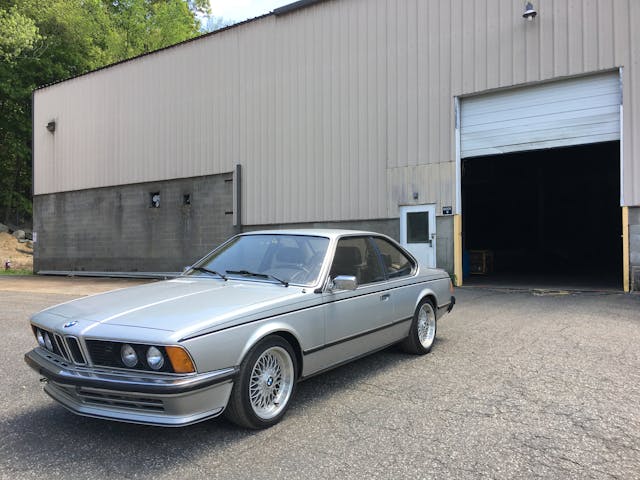
So, what began as my feeling like a negligent hoarder, and deepened into a crisis of automotive faith, suddenly was banished like a bad dream in the reassuring light of morning. I was on top of things again. All 13 cars were running and inspected, with eight of them at my house, and the other five just two or three or four episodes of Rick and Morty away. I thought, “Hey, maybe staying together for the kids isn’t so bad. Maybe we just need to spice things up a little bit.”
Maybe even add another kid?
***
Rob’s latest book, The Best of the Hack Mechanic™: 35 years of Hacks, Kluges, and Assorted Automotive Mayhem, is available on Amazon here. His other seven books are available here on Amazon, or you can order personally inscribed copies from Rob’s website, www.robsiegel.com.
Check out the Hagerty Media homepage so you don’t miss a single story, or better yet, bookmark it. To get our best stories delivered right to your inbox, subscribe to our newsletters.

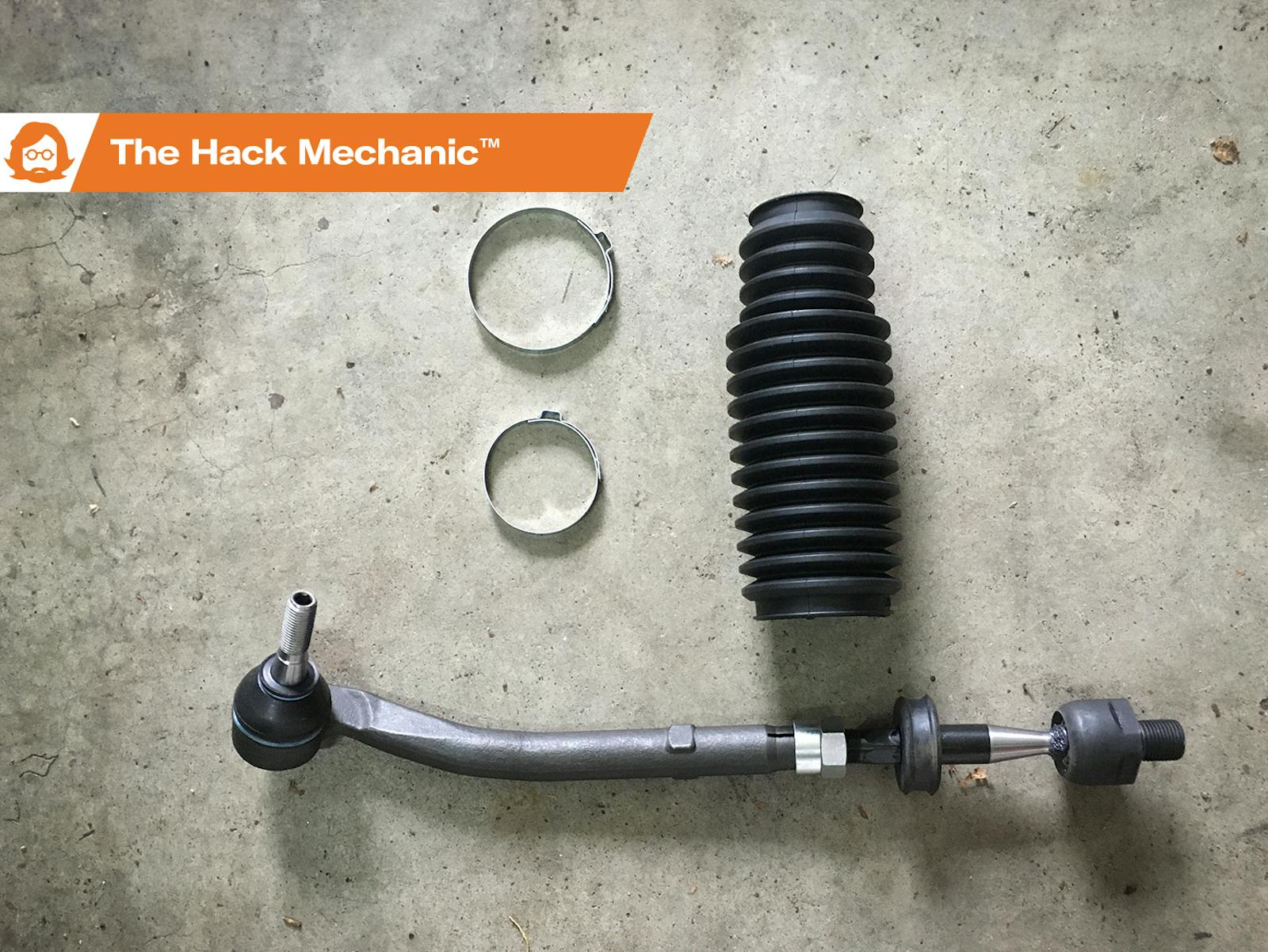
Do you have human children or just the automotive kind? I used to be all over the maintenance, licensing, and restorative planning of my cars…then I had two additions that took up different space in the house. I love my sons, but my cars have taken a bit of a back-seat for many years. I have 4 cars inside the garage and 3 personals outside, 1 company vehicle out. Keeping track of oil changes and other maintenance—even just keeping them running has become a seat of the pants experience. In addition to the cars, the kids began racing soap box derby and we amassed a fleet of derby race cars the kids drive on streets and tracks that each require unique set-ups and maintenance after racing. I am a naturally over-organized person and I am in a bit of a struggle/overwhelmed. Inspections and license renewals on the motor vehicles for the most part include a friendly reminder that the State wants another $300-ish per vehicle, so that part is easy. Derby car work is a passion for me and the boys. Maintenance on the motor vehicles has become a grey area.
I just can’t imagine the number of cars ‘kids’ you have Rob and having human kids to care for too. If you have human kids—you are a true superhero. Thank you for your articles—always fun to read and relatable.
My son and I have had to move our cars and fire engines recently. (Yes, it’s tough stashing two of those away indoors.) We’re paying more in the mid-west than you are in Massachusetts, so be happy about that. Warehouse space is the only valuable commercial property right now. And yes, we’ve been selling off and shrinking the herd. There’s just no choice. But I would sure keep that 6-series if I had it!